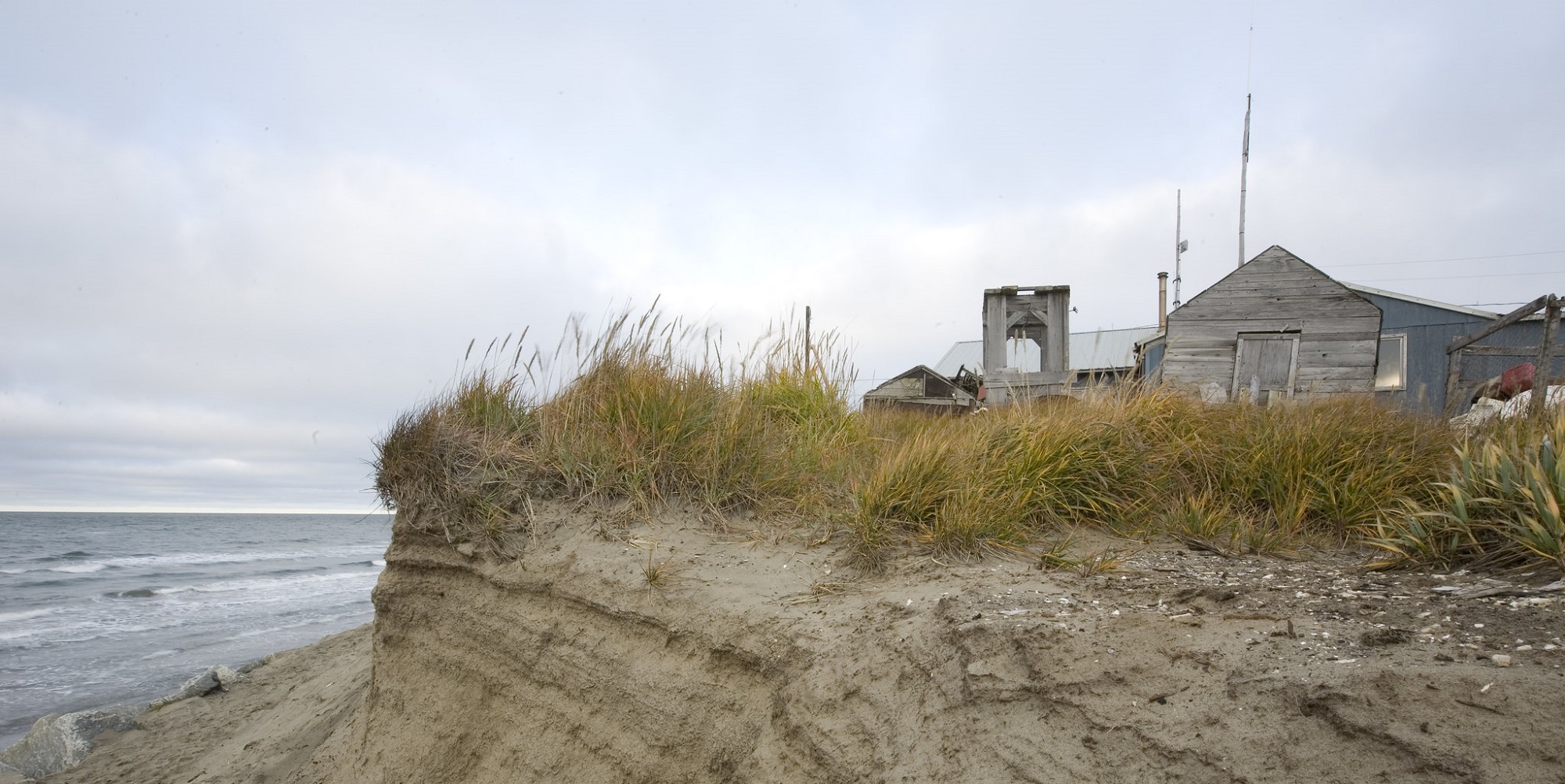
Take the small Alaskan village of Shishmaref; ten flooding and 11 intense coastal erosion events were recorded between 1973 and 2015. These climate stressors have had a devastating effect on the village, with several climate events declared state and federal emergencies. Erosion of the coast has caused buildings to collapse into the sea, and permafrost degradation has resulted in sinking homes and cracking roads.
Climate disasters like those faced in Shishmaref and other Arctic communities stress the need for adaptation. The purpose of adaptation strategies are to moderate or avoid harm associated with climate impacts (IPCC, 2018), and planned adaptations can be broken down into three kinds: structural, non-structural, or ecosystem-based measures, as shown in the table below:
| Definition and classification | Examples to reduce vulnerability in practice | Benefits | Drawbacks |
| Structural (hard adaptation) An infrastructural change or improvement that is intended to increase a community’sresilience to climate impacts (Wenger, 2015) | To physically protect against storm surge, coastal erosion, sea level rise, permafrost thaw and flood shoreline armoring levees sea walls drainage channels damsdykeselevated infrastructure (stilts)heat insulators | Commonly used and well understoodQuick to installAssociated with a visible sense of security | Associated with rigidityCapital intensiveCostly to maintainContribute to environmental degradation |
| Non-Structural (soft adaptation) Measures that focus on human behavior and aim to permit the continued use of vulnerable areas by managing climate risks primarily through planning, including the regulation of land use and development (Harman et al., 2015) | To reduce exposure to storm surge, coastal erosion, permafrost thaw, sea level rise and flood planned relocation or retreat altered land use and building controls elevated floor requirements increased setbacks emergency managementinsurance | Greater flexibility in responding to climate threats More cost effective than structural adaptations | Social barriers challenge implementationSubject to institutional and political constraints |
| Ecosystem-based (soft adaptation) Protective strategies that leverage the adaptive opportunities associated with ecosystem services (Wilson & Forsyth, 2018; Jones et al., 2012) | To reduce the impacts of storm surge, coastal erosion, sea level rise, and flood beach nourishmentsand dune restorationwetland preservationrain gardens | Unobtrusive in nature Potential to enhance ecosystem health Additional recreation and aesthetic opportunities | Limited understanding of how to value ecosystem services in monetary metrics |
Table 1. Adaptation approaches. Structural, non-structural, and ecosystem-based approaches are defined and classified with examples provided according to climate vulnerabilities. Benefits and drawbacks are presented for each approach (Bonnett & Birchall, 2020).
Coastal communities in the Arctic often rely on structural adaptations, including seawalls, armour stone and dykes to cope with increasing rates of storm surge, coastal erosion and flooding. However, structural adaptation measures alone are not a sustainable approach to reducing vulnerability in the North: they are rigid, costly to install and maintain, and prone to deterioration in the harsh Arctic climate.
Non-structural adaptations, such as stringent setbacks and development regulations, are used far less frequently in Northern communities. However, these soft measures present several opportunities for vulnerability reduction, as they are more flexible and less costly than hard adaptations, and can effectively steer development out of dangerous areas. This is not to say that non-structural adaptations lack key challenges. Managed retreat or relocation, in particular, is viewed to be a more extreme and controversial non-structural adaptation. The village of Shishmaref has been planning to move the entire community to a more suitable inland site since 1976, yet the process of retreat has been significantly delayed by several barriers, including the considerable cost of relocating key services and infrastructure, and feelings of social disruption.
The third kind of adaptation strategy we explore, ecosystem-based approaches, are innovative and sustainable options that leverage the adaptive opportunities offered by natural ecosystems such as wetlands. This type of soft adaptation is difficult in the Arctic, given the lack of diversity in wetlands and of ecosystem ‘engineering’ species (such as mussels). which can shape the wetland environment to help bolster an ecosystem. Yet ecosystem-approaches are nevertheless possible.
Climate change is locked-in, and for small coastal communities in the Arctic, this means continued vulnerability and exposure to climate risks. However, northern communities can enhance their resilience by adopting a more sustainable and diversified portfolio of adaptation strategies. This does not mean that structural adaptations should be eliminated, rather, coastal communities can use existing structures in combination with soft adaptations to create a more robust response to climate stressors. For example, a well-preserved coastal ecosystem on the sea-side of an existing sea wall can absorb and dissipate wave energy, which can help reduce the likelihood of the structure getting damaged or overwhelmed. Adaptation strategies can be more sustainable and effective at reducing climate vulnerability when they are combined and working together, strengthening the cumulative protection of assets and residents.
For further discussion, see:
Bonnett, N., & Birchall, S. J. (2020). Coastal communities in the Circumpolar North and the need for sustainable climate adaptation approaches. Marine Policy, 121, 104175.
Image by Lawrence Hislop: Erosion of sand cliff at the edge of Shishmaref, Alaska (CC BY-NC-SA 2.0)